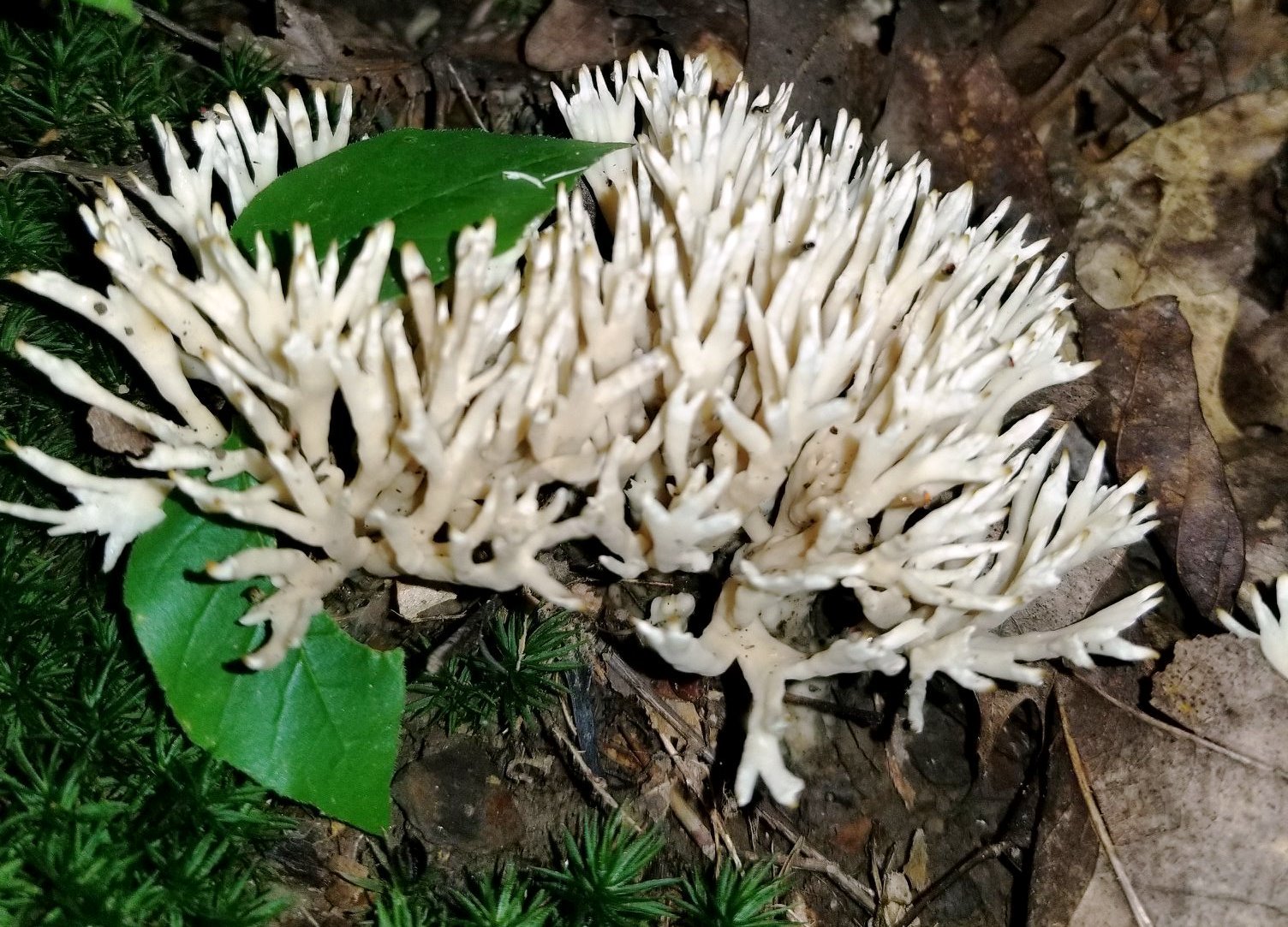General information:Common names: Trémellodendron tenaceClass: Agaricomycetes Familly: Sebacinaceae Genus: Tremellodendron Order: Sebacinales Phylum: Basidiomycota Usable: Not edible |
Tremellodendron tenax is a type of fungus belonging to the Basidiomycota phylum. It is commonly known as the “jelly ear fungus” or “wood ear fungus” due to its distinctive appearance.
Tremellodendron tenax typically grows on decaying wood, particularly on elder trees, and is found in various regions across the world. It forms gelatinous or rubbery fruiting bodies that are ear-shaped or cup-shaped and can range in color from pale yellow to brownish or reddish-brown. The fungus is characterized by its flexible and elastic texture, which is why it is often referred to as the “wood ear fungus.”The fruiting bodies of Tremellodendron tenax are thin and flexible, with a smooth or slightly wrinkled surface. They are attached to the substrate, often decaying wood, by a broad base or a short stalk. The color of the fungus can vary depending on its age and environmental conditions. It typically ranges from pale yellow or tan when young, to brownish or reddish-brown when mature.
Microscopically, Tremellodendron tenax exhibits typical characteristics of Basidiomycota fungi. It produces basidia, which are club-shaped structures that bear spores. The spores are hyaline (translucent) and ellipsoid or roughly spherical in shape. They are typically smooth or finely textured and can vary in size.
Tremellodendron tenax is known for its habitat preference for decaying wood, particularly elder trees (genus Sambucus). It is a saprobic fungus, meaning it obtains nutrients by decomposing organic matter. The species has been reported in various regions worldwide, including Europe, North America, and Asia.
While Tremellodendron tenax is sometimes used as a culinary ingredient in certain cultures, it is important to exercise caution when consuming wild mushrooms. Proper identification is crucial, as some species can be toxic or inedible. If you are interested in collecting and consuming wild mushrooms, it is recommended to consult with an expert mycologist or refer to reliable field guides for accurate identification.
Medicine and healh benefits
Tremellodendron tenax, like other fungi, contains various bioactive compounds that could potentially have health benefits. Fungi, in general, have been a source of important pharmaceutical compounds, such as antibiotics and immunosuppressants.
Some studies have suggested that certain fungi possess antioxidant, antimicrobial, and anti-inflammatory properties. However, it is necessary to conduct specific research on Tremellodendron tenax to determine its potential medical applications and evaluate its safety and efficacy.
It’s important to approach the medicinal use of any natural substance, including fungi, with caution. If you are considering using Tremellodendron tenax or any other natural product for medical purposes, I strongly recommend consulting with a qualified healthcare professional or a mycologist who can provide accurate and up-to-date information based on scientific research and clinical studies. They can assess the potential risks, benefits, and appropriate usage guidelines specific to your situation.
Edibility
Tremellodendron tenax ir generally considered edible. However, it is important to exercise caution when consuming wild mushrooms and ensure proper identification to avoid any potential risks.
In culinary traditions, Tremellodendron tenax is sometimes used as an ingredient in certain dishes, particularly in Asian cuisine. It is valued for its texture and subtle flavor and is often rehydrated and added to soups, stir-fries, and other savory dishes. However, please exercise caution when foraging for wild mushrooms and consult with an expert to ensure proper identification, as there are other similar-looking species that can be toxic if consumed.
Tremellodendron tenax is known for its culinary use in certain cuisines, particularly in Asian cooking. It is valued for its gelatinous and slightly crunchy texture, as well as its mild flavor. It is often rehydrated by soaking in water before being added to soups, stir-fries, and other savory dishes.
That being said, it is crucial to differentiate Tremellodendron tenax from similar-looking species, as some mushrooms can be toxic or inedible. Mistaking it for a different fungus can lead to adverse effects if consumed.
Occurrence
Tremellodendron tenax is known to occur:
Europe: Tremellodendron tenax is found throughout Europe, including countries such as the United Kingdom, Germany, France, and Italy.
North America: It is also present in North America, including the United States and Canada. It can be found in regions with suitable habitats and suitable tree species.
Asia: Tremellodendron tenax is commonly encountered in Asian countries. It has a long history of culinary use in Chinese, Japanese, and Korean cuisines. It can be found in regions like China, Japan, Korea, and other neighboring countries.
Australia: Tremellodendron tenax has been reported in parts of Australia, particularly in the temperate regions.
Other regions: While the above regions are commonly associated with the occurrence of Tremellodendron tenax, it is worth noting that it may also be found in other parts of the world with suitable environmental conditions and tree species.
